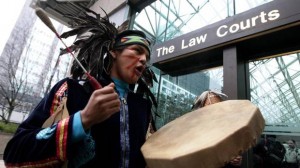Make the right Decision
With British Colombia’s ambition to be the world’s greenest city by 2020[1], is building a dam a positive reflection to their goal? BC Hydro is an electric company in BC that will undertake this CAD$ 8 billion project [2]. At the expense of the loss of indigenous people habitat, is it a worthy project to invest on? Building the dam may prove to be a sign of progress and development but could also be seen as political instability, social inequity and environmentally degrading. The article titled, “First Nation chiefs to stage Site C showdown,” published on 18/09/2014 by Peter O’Neil explains some of the problems faced with the project at hand [3]. I’ll be discussing the issues that arise from the exploitation of First Nation’s land.
When I first heard about the dam it reminded me of Belo Monte project in Brazil [4]. There were over 20000 “Amerindian” indigenous inhabitants displaced, 40 000Ha of forest were flooded and mass deforestation took place. US Film maker James Cameron, portrays “[the Belo-Monte dam leaders to Ecological villains in the movie Avatar]“[5]. This is not the image that the Canadian Government would want people to perceive them as around the world. It also doesn’t align with their ambitions of having the world greenest city. As it does not only harm the indigenous people but also de-stabilizes the ecosystem as a whole as several species would lose their habitats. On the other hand, the dam would generate more electricity into new homes and also create more jobs for the unemployed. Despite these positive aspects, is the value proposition of the dam worth destroying someone’s habitat, where their ancestors lived and the only place that they can call a home? Why should they be willing to relinquish their land to a project that would not mutually benefit them? These are some of the questions the Canadian government needs to think about before investing in the project.
To conclude, the Government has a choice in either investing in the dam or not. But they should be prepared to affect a particular social group with their decision. In the long-term they are expected to find a way to compensate the group they’ve affected. Personally I believe if they decide to invest in the dam the effects would be more severe on the first nation people and might not be easily forgiven and they might spark genocide because of this. Therefore, I feel the right decision is to find a different potential area where they could build their dam where there aren’t any inhabitants or a few inhabitants, who can be easily moved. Or they could have an agreement with the first nations that would benefit both parties from the building of the dam.
BIBLIOGRAPHY
[2]
http://www.bchydro.com/energy-in-bc/projects/site_c.html
Website Title: Site C Clean Energy Project
Article Title: Site C Clean Energy Project
Date Accessed: October 07, 2014
[3]
http://www.vancouversun.com/news/First+Nation+chiefs+stage+Site+showdown/10215965/story.html
Website Title: www.vancouversun.com
Article Title: First Nation chiefs to stage Site C showdown
Date Accessed: October 05, 2014
[4]
[5]

